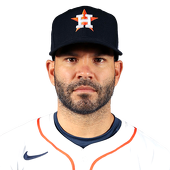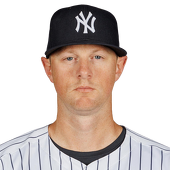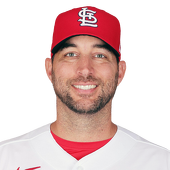2017 Fantasy Baseball Draft Prep: Trust the year over the career for Jose Altuve and other 2016 outliers – CBSSports.com
I’ve talked enough about obvious regression candidates Rick Porcello and Kyle Hendricks. I’m not going to belabor the coming fall for Jean Segura and Jonathan Villar any more. That’s not really fun anyway, right? I’m tired of being the wet blanket telling you that last year’s career year can’t be matched. Even if it’s most often the truth.
So I went looking for players who were uncharacteristically good in 2016 who I actually believed in. Players who set new high-water marks that may be closer to a new reality than a blip on the radar. The calendar has turned to March, the leaves are turning green, so let’s get optimistic.
Altuve was one of only three players in baseball in 2016 to hit .300 with 20 HR, 20 SB, 90 runs and 90 RBI. He had hit .341 before and stole 56 bases in the same season. Those two stats weren’t the least bit surprising. What came out of the blue was Altuve’s power and run production. Altuve had never had more than 152 runs and RBI combined in a season. He’d never hit more than 15 home runs. He crushed both of those numbers.
Altuve’s run production numbers come largely from his increased power, so let’s look at how sustainable that looks. He had a 13 percent HR/FB rate, which isn’t much above league average. It was, however, double his career average. How did he do it? He increased his hard contact rate to 33.8 percent, which was also a career high. When you look at players with a HR/FB rate similar to Altuve’s from 2016, his hard contact rate doesn’t stand out. In other words, as long as he maintains the hard contact, his home run rate seems sustainable. Considering he’s still just 26, I have no trouble believing in last year’s power spike.
The run production may be slightly skewed by the fact that Altuve led off for 44 games in 2016. He scored 39 runs in those 44 games, which is nowhere near sustainable. Still, he figures to hit second or third in one of the best lineups in baseball. He has averaged 158 games per season the past three years, if he hits that mark again this year I would expect somewhere north of 90 runs and 90 RBI again.
Altuve is a consensus first-round pick who I would take second overall. I see nothing that would lead me to expect regression.
LeMahieu defied all odds in 2016. A career .284 hitter who had never slugged better than .400 in a full season, LeMahieu put everything (including some good BABIP luck) together, won a batting title, scored 104 runs and topped 50 extra base hits. But it’s not sustainable, right?
Listen, I’m not going to tell you that he’s going to hit .348 ever again. But I like his odds of finishing closer to .348 than .284. What’s more, his 35 percent hard contact rate and 26 percent line drive rate in a place like Coors should absolutely produce a high BABIP and a ton of doubles and triples. He’ll be hitting those doubles and triples atop a lineup that has to be the odds-on-favorite to lead baseball in runs.
Regression may nick LeMahieu, but it won’t be a direct hit. Feel free to draft him as a top-10 second baseman.
It wasn’t that last year was the first time we’d ever seen Danny Duffy be a good-to-great starting pitcher. We saw it in 2014 when he posted a 2.53 ERA in 149.1 innings. The difference was this was the first time it seemed sustainable. In 2014 Duffy’s SIERA was a pretty awful 4.31. Last year it nearly matched his ERA exactly (3.53).
Duffy is a long way removed from his time as a prospect, but it’s worth noting that his K rate last year didn’t come out of nowhere. He struck out 10.6 batters per nine innings in his minor league career and had a 2.87 ERA. It’s a little hard to believe he put it all together five years later, but everyone’s path is different.
What is most important about Duffy is not to romanticize the dominant portion on his season. When I say you should trust his season, I mean the whole season. In 2017 I would expect an ERA in the mid 3s with near 200 Ks. That makes him a high-end No. 3 starter worth so much more as a SPARP in a points league.
Hill’s long, tumultuous journey to 2016 has been well documented. When the season starts he’ll be a 37 year old with a career 4.10 ERA and a BB/9 nearly as high. I don’t care.
Hill was so phenomenal last season when he did pitch I don’t see any benefit to doubting it. He has quite clearly harnessed his control and there hasn’t been any question about his ability to miss bats since 2011. He’s also on a team expected to win 90+ games, so your only real concern is innings and that’s a legitimate concern.
I’m not telling to trust Rich Hill will stay healthy or give you anywhere close to 200 innings. That’s why he’s a much better option in Rotisserie leagues. He’s high-upside No. 3 starter who could perform like an ace when healthy.
You didn’t think this whole piece was going to be optimistic, right?
Adam Wainwright surpassed all of my expectations in 2016 by simply returning and throwing 198 innings. It’s a testament to his work ethic and competitiveness that he got back at all considering the severity of the injury and his age. But he didn’t get anywhere close to his prior level of performance and I wouldn’t expect that he ever will.
Wainwright’s loss of velocity wasn’t significant, but it’s pretty clear his loss of stuff was. He threw fewer pitches in the zone than he ever had in his career and opposing hitters chased just 29 percent of the pitches he threw outside of the zone.
Wainwright is someone I’m just not drafting at all in a mixed league in 2017. I don’t to see the upside to justify the considerable risk.








